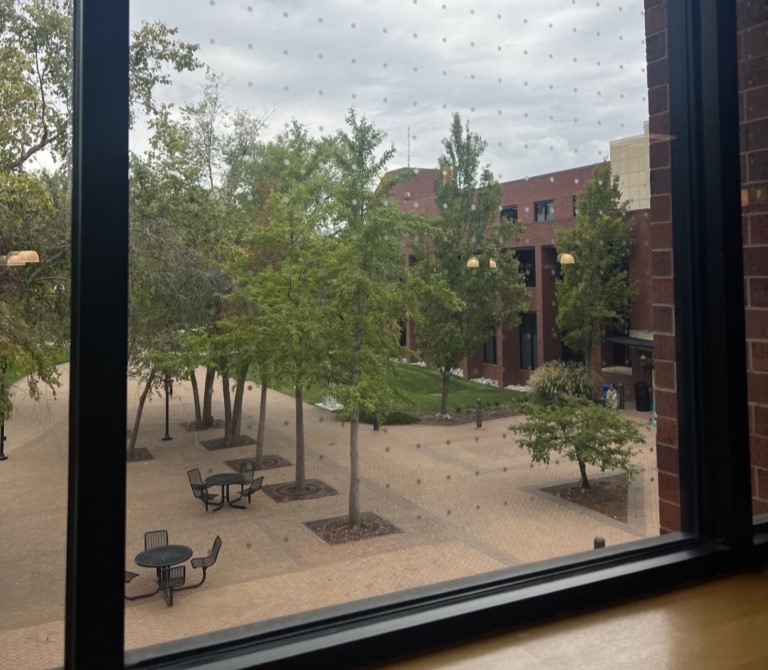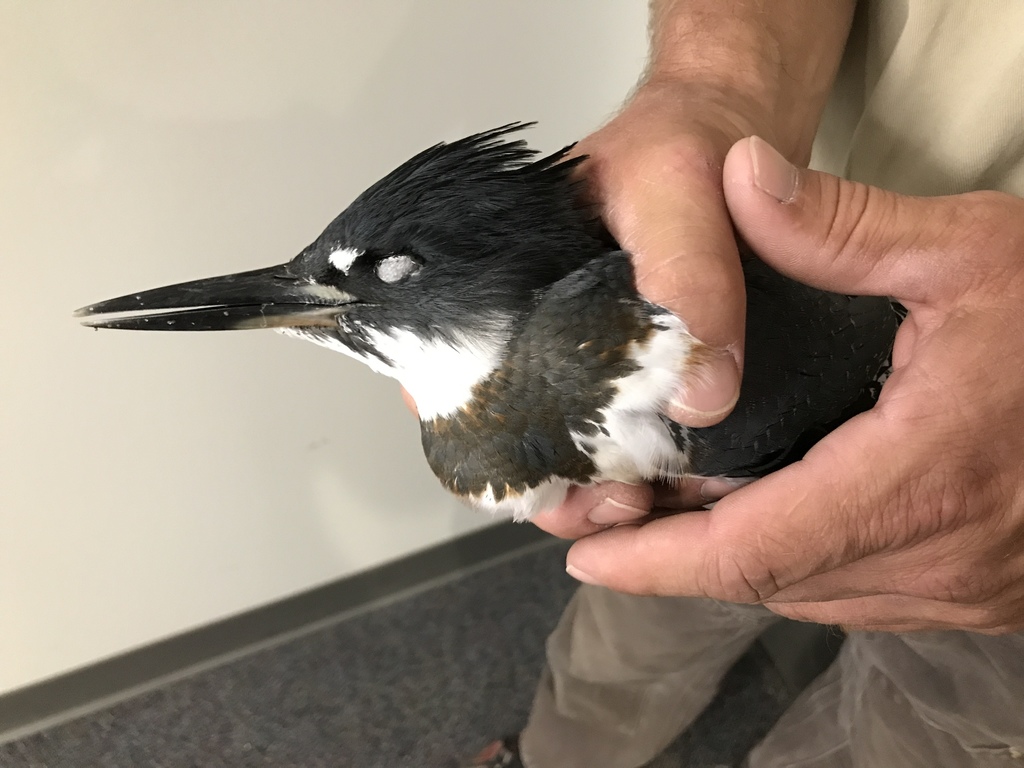Every fall and spring, billions of birds travel along migration paths navigating near lakes, rivers, and coastlines looking for food and resources for their long journeys south for winters and north for summers.
It’s estimated that 600 million birds die from building collisions every year in the U.S., especially during migration. A Cornell Lab of Ornithology report ranks Kansas City the 8th most dangerous city for birds’ fall migrations, and 7th for spring migrations.
Why does Kansas City rank so high?
The Cornell Lab of Ornithology ranks Kansas City in the top 10 most dangerous cities for migrating birds based off of its research using satellite data of light pollution levels and weather radar measuring bird migration density.
Many big cities in the middle of America rank high due to the large levels of migrating birds through the central U.S. and the levels of light pollution. Chicago, Houston, and Dallas rank as the top 3 in both spring and fall.
Why do birds hit glass?
In daylight, birds collide into windows confused by reflections in the glass. During nightly migrations, bright lights can disorient birds.
This week, Chicago made headlines for 1,000 bird fatalities that were reported from just one night at one building.
According to the American Bird Conservancy, morning is the worst time for collisions. When the sun rises, tired birds who have been migrating all night, as well as resident birds, are actively seeking food and shelter.

At Johnson County Community College, student interns record window bird collisions for the JCCC Bird Collision Study. Photo courtesy of Krystal Anton.
JCCC’s efforts to reduce collisions are working
Locally, Johnson County Community College (JCCC) has seen great success in reducing bird collisions on its campus.
The JCCC Bird Collision Study began collecting data about bird collisions in 2018 after Krystal Anton, Zero Waste Coordinator for JCCC’s Center for Sustainability, was witnessing dead birds around campus.
“I was seeing dead birds every day and wondering what is going on here. I did some crowdsourcing and received about 60 reports from other employees that they were seeing the same thing. That’s when I knew I could do something,” Anton said.
During the first year of the study in 2018, Anton and her team of interns and volunteers walked the campus every day, counting bird collisions and recording them in iNaturalist. They counted 300 dead birds, and 40 birds were able to go into rehabilitation.
“We are now seeing about a 50% reduction in bird strikes,” Anton said.
The biggest solution they enacted was to treat the windows with the highest collisions with a dot pattern to break up the reflection. The dots were installed on about 4000 sq. ft. of windows across campus in 2019 and 2020. They worked with Oracal vinyl film and a local sign company to install the etched glass vinyl dot patterns.

JCCC has been adding dot patterns to windows with the highest rates of collisions to reduce bird deaths. Photo courtesy of Krystal Anton.
In addition to reducing window reflectivity, new buildings use DarkSky Approved light fixtures and building interior lights are scheduled to go off at 11 PM.
It has been a campus-wide citizen science effort since it started. Anton receives regular emails and text messages from students and staff about bird collisions for the study.
The project has created a new awareness and appreciation for birds. Over 1,000 bird observations have been recorded including 98 different species since the study started.
They deliver injured birds to Operation Wildlife for rehabilitation, and send the dead species to the University of Kansas Biodiversity Institute for research. Birds taken to rehab have had higher than a 90% recovery rate.
The study and efforts are still on-going. Not only do they observe which buildings and windows have the most collisions, but they are also seeing patterns related to the tree canopy on and near campus.
“I call them bird runways. A lot of the worst places on campus have a line of trees nearby and birds follow the tree lines, especially smaller birds because it keeps them safe from predators. When the last tree is actually a reflection in the glass, they will just follow it into the glass,” Anton said.
As ash trees are being removed across campus due to emerald ash borer, and new trees are going in, they are observing changes in collision patterns.
Interns now only walk during the migration seasons. To date this year, they only have 80 recorded bird collisions, including 13 birds that survived.

Operation Wildlife was able to rehabilitate an injured belted kingfisher found on the JCCC campus. Photo courtesy of Krystal Anton.
What can you do to help?
Many groups are beginning to advocate for bird-friendly architecture and reduced light pollution for migrating birds. Illinois passed the Bird Safe Buildings Act in 2021, and New York City and San Franciso have enacted similar policies to require bird-friendly glass on new buildings. Cities and building owners are also signing up for Audubon’s Lights Out program.
There are simple and low-cost changes everyone can make at home or work to help migrating birds.
1.Fix existing windows so they are less reflective If you’ve witnessed a bird hit one of your windows, chances are so have your neighbors. All shapes and sizes of buildings regularly cause bird collisions. It’s estimated that 44% of deadly collisions occur at residences. You can break up the reflectiveness of your windows with many solutions including special adhesive products like stickers and films, bird and insect screens, and decals. Check out the American Bird Conservancy’s recommended products.
2.Turn off the lights at night During migration seasons, join the Audubon’s Lights Out national campaign to turn off exterior and interior lights near windows at night, as well as shut the curtains, whenever possible, but especially in May and September.
If you are replacing lights, look for down-shield options that reduce the horizontal and vertical glare. For more lighting tips, check out the Audubon’s Lights Out program.
You can also join the regional lights out campaign with Dark Sky Missouri and Lights Out Heartland.
3.Help shocked birds Sometimes when a bird collides with a window, it is still alive and in shock. Many of these birds will fly off and die soon after from internal injuries. If you find a bird that is still alive, you can save its life by getting it rehabilitated. In Kansas, Operation Wildlife accepts birds and in Missouri, Lakeside Nature Center does.
4. Submit a bird strike to BirdSafeKC The BirdSafeKC project is conducting a bird collision study across the metro, focusing mainly on downtown Kansas City, MO. If you witness a bird collision, you can submit it on birdsafekc.org.
The program also works with local building owners to identify low-cost solutions to reduce collisions. The project is being conducted by the Missouri River Bird Observatory.
